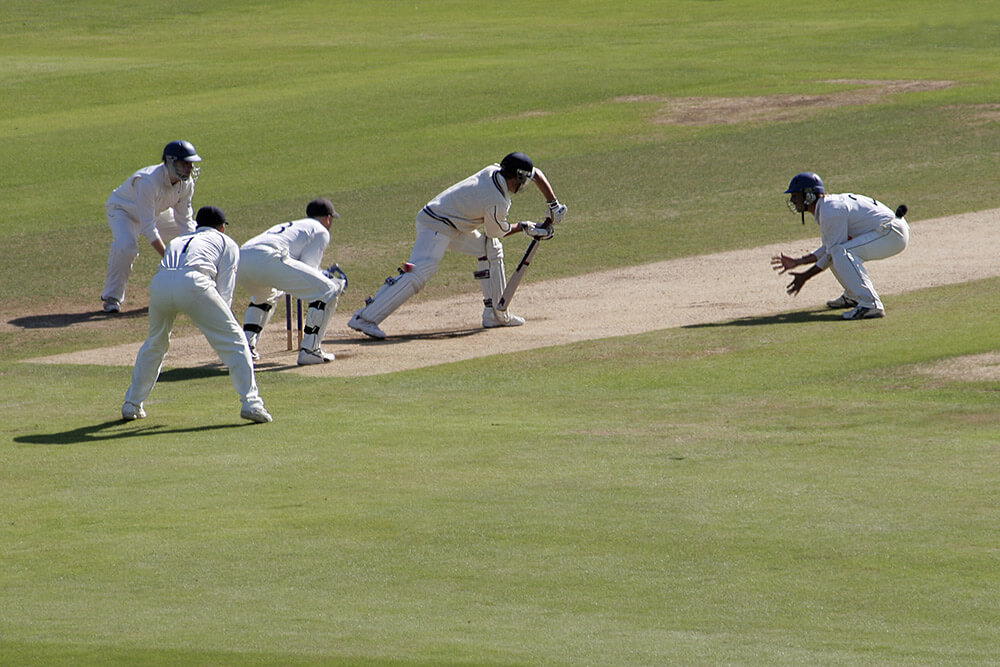What Is Power Play in Cricket?
In the world of cricket strategy, the concept of power play emerges as a pivotal game-changer. It’s a designated phase during a limited-overs match when specific rules are enforced, unleashing both opportunities and challenges for teams. Understanding the nuances of power play is crucial to comprehend its impact on the game’s dynamics.
Evolution of Power Play
Initially introduced in 1992, power play was a revolutionary addition to limited-overs cricket. Over time, its structure has evolved, showcasing the sport’s adaptation to strategic shifts. In its inception, the power play involved only mandatory fielding restrictions; however, with the advent of T20 cricket, it evolved into multiple phases within an innings.
The Power Play Phases
Crucially, the power play unfolds in distinct phases: the initial fielding restrictions, where only a limited number of fielders are allowed outside the 30-yard circle, followed by the more intense batting power play, where restrictions on field placements are further eased to aid scoring.
Strategic Implications
The strategic implications of power play cannot be overstated. Teams strategize meticulously, balancing aggressive batting with prudent field placements to maximize their advantage. Bowlers face the challenge of maintaining control while dealing with aggressive batting strategies during the power play overs.
Also Read Mastering the art of Cricket Strategy with CricInsights
Impact on Match Outcomes
Statistics reveal the profound impact of power play on match outcomes. Teams effectively utilizing this phase tend to score higher totals, often influencing the final result. The shift in momentum during power play overs can swing matches dramatically, making it a game-defining segment.
Trends and Notable Data
Examining the data, trends emerge, showcasing the significance of power play. On average, teams scoring more runs during the power play tend to win a higher percentage of matches. Additionally, there’s a correlation between wickets taken and power play success, emphasizing its dual impact on both batting and bowling strategies.
Innovations and Adaptations
As cricket evolves, so do power play tactics. Teams experiment with innovative strategies, such as using spinners during power plays to create uncertainty or employing pinch hitters to accelerate the scoring. Such adaptations underline the constant quest for a competitive edge in the sport.
Also Read Cricket Spin Bowling: Leg Spin vs. Off Spin, Techniques, and Challenges
Maximizing Power Play Potential
The key to leveraging power play lies in a balanced approach. Teams must assess conditions, opposition strengths, and the stage of the game to optimize their performance during this crucial phase. Adaptability and quick thinking become essential weapons in the arsenal.
Challenges and Risks
However, with the potential rewards come inherent risks. Aggressive batting strategies can lead to quick wickets, shifting momentum in favour of the opposition. Similarly, bowlers aiming for breakthroughs during power play can become susceptible to conceding boundaries.
Striking the Balance
Ultimately, mastering the art of power play entails striking a delicate balance between aggression and caution. Teams that navigate this phase astutely often find themselves with an upper hand, significantly impacting the outcome of matches.
In conclusion, power play in cricket transcends mere rules; it embodies the strategic essence that defines modern-day cricket. Its evolution, impact, and strategic significance underscore its status as a critical phase, shaping the narrative of matches and leaving an indelible mark on the sport’s landscape.
I am Dhaval Jain, SEO All-Rounder at CricHeroes.
CricHeroes is an ultimate Cricket Scoring App and the world’s only true Cricket Network. With more than 30 million registered cricketers using CricHeroes to Live Score their Local Cricket Matches and Tournaments, CricHeroes is already the number one Cricket Scoring App in the world!










